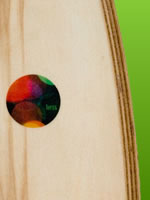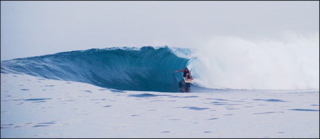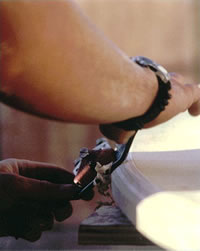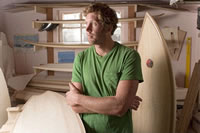Hess Surfboards
Danny Hess surfs Ocean Beach, San Francisco. A beach break with a reputation for holding a swell up to whatever size you can  personally manage and making even the strongest surfers sulk all the way home. It’s a fast hollow wave. On big days most people are lucky to even make it outside. There are stories of Ocean Beach locals running stairs and doing pull-ups in preparation for the cold and unforgiving winter swells. It’s here that Danny has proven that his hollow wood boards are not just a throwback to traditional shapes but future-sleds, boards capable of speeding around sections and drawing clean lines before disappearing into the cavernous beach break barrels, boards that will do so year after year and then eventually turn back to dust.
personally manage and making even the strongest surfers sulk all the way home. It’s a fast hollow wave. On big days most people are lucky to even make it outside. There are stories of Ocean Beach locals running stairs and doing pull-ups in preparation for the cold and unforgiving winter swells. It’s here that Danny has proven that his hollow wood boards are not just a throwback to traditional shapes but future-sleds, boards capable of speeding around sections and drawing clean lines before disappearing into the cavernous beach break barrels, boards that will do so year after year and then eventually turn back to dust.
Danny is not new to green construction methods. As a green building contractor in the Bay Area Danny was familiar with the ins and outs of sustainability. A passion for surfing and woodworking eventually launched him into a full-fledged board building lifestyle. Danny combines perimeter rail technology with EPS spine and ribs and wraps the boards in Epoxy. His boards look like fine furniture. But how do they work? The photos on his site and the ones provided here for us by Erin Kunkle are the proof. From cold Ocean Beach barrels to blue Indonesian perfection, Danny’s boards seem to fit, fly and flex perfectly.

One striking aspect of Hess’s approach is his outright commitment to making a product with environmental ethics in mind. He is clear about the materials he uses and makes sure that longevity is part of his surfboard’s characteristics. One of the first people to respond to our request for an interview, Danny was stoked about our plans to explore sustainably minded surf products. After some time we finally bring you this interview. Check out his boards at www.hesssurfboards.com
Also check the new blog at www.hesssurfboards.blogspot.com
Q. Please tell us a little about yourself and how Hess Surfboards came to be.
A. First off let me thank you for starting this website and inviting me to participate. The evolution of Hess Surfboards has been a pretty organic process. I began making my own boards when I was around 16 and have become more and more committed to it since. My original motivation for making boards is the same now as it was when I began- to make a stronger, longer lasting, more functional surfboard.
My first 30 or so boards were made from traditional PU/PE materials, but when I began making a living as a green builder/ designer about 8 years ago and moving towards a more sustainable way of living, I became very motivated to build a surfboard with far less environmental impact. I spent just about all of my free time when I wasn’t surfing or working on clients homes developing the fundamentals of my technology and method for building these boards. I never doubted that wood was the best material to use. I was very familiar with it, nothing can do what it does and I had established a lot of great sources for sustainably harvested wood through the work I was already doing. The first board took me over 160 hrs to build, and each generation since has taken far less time, been far lighter, and much stronger. It has been a continuous process of trying many different ways of putting all of the elements together to get better results.
 The last couple years I feel that I’ve come to a refined point where I am no longer making these dramatic changes in the construction of each board. I feel very confident that the makeup of each board, as they are now, is what I’ve been working towards for these years. It never occurred to me in the beginning that I would be building these boards for a living. My motivation has always been a personal one. At first I began building these boards for a few local Ocean Beach surfers that were interested and over the last seven years it has slowly evolved in to building boards for people all over the world and it’s how I now make a living.
The last couple years I feel that I’ve come to a refined point where I am no longer making these dramatic changes in the construction of each board. I feel very confident that the makeup of each board, as they are now, is what I’ve been working towards for these years. It never occurred to me in the beginning that I would be building these boards for a living. My motivation has always been a personal one. At first I began building these boards for a few local Ocean Beach surfers that were interested and over the last seven years it has slowly evolved in to building boards for people all over the world and it’s how I now make a living.
Q. In some of my research on surfing forums I have encountered surfers who think of the idea of green surfing as being “hippy lovin, tree huggin, soy drinking” rubbish. Essentially the kind of lackadaisical attitude that mass media assigns the surf world. How do you think this point of view can change? Have you experienced this kind of banter in your work?
A. “Go shape a pickle if you want a green surfboard”. That was always my favorite comment when I first began posting my “green” surfboards and ideas online. A lot of people seem to think that you need to sacrifice a boards’ performance to build a board that has less environmental impact. I think the opposite is true. It is totally possible to build a healthier surfboard that lasts far longer and performs far better than the conventional boards that the majority of surfers are riding today. This has been my main motivation in building and developing the technology that goes into each of my boards.
 When I began selling my wood surfboards for a living, unfortunately clients were not coming to me because they wanted a surfboard that was better for the environment. Now that is the motivation behind a large number of the orders I get. I do think there is a growing level of awareness in the surfing world. Clark’s closure forced people think about where their surfboards come from. Patagonia and the Malloy brothers are certainly having a positive impact, and websites like this one are now finding audiences where there wasn’t before. I truly feel that we are at the beginning of a larger acceptance and awareness by the surfing population that the idea of living in a more sustainable way is good and maybe even cool. I believe it is inevitable for each surfer to, at some point, to look at their very close relationship with the ocean and draw the conclusion that it is something that they need to actively protect.
When I began selling my wood surfboards for a living, unfortunately clients were not coming to me because they wanted a surfboard that was better for the environment. Now that is the motivation behind a large number of the orders I get. I do think there is a growing level of awareness in the surfing world. Clark’s closure forced people think about where their surfboards come from. Patagonia and the Malloy brothers are certainly having a positive impact, and websites like this one are now finding audiences where there wasn’t before. I truly feel that we are at the beginning of a larger acceptance and awareness by the surfing population that the idea of living in a more sustainable way is good and maybe even cool. I believe it is inevitable for each surfer to, at some point, to look at their very close relationship with the ocean and draw the conclusion that it is something that they need to actively protect.
Q. Part of beginning a dialog about sustainability involves understanding what the concept is exactly and how it relates to surfing. What does sustainability mean to you and how do you apply it in your work?
A. My definition of true sustainability is the unaltered natural environment functioning in perfect balance as nature intended it to be. Examples of this are certainly rare in today’s world, and becoming rarer each day. In my everyday life I try to look at it as an ongoing process of moving towards a greater balance. Actively finding ways to decrease my negative environmental impact in all areas of my life and being thoughtful about the resources I use.
Q. It seems to me that maybe we need a new aesthetic. Your boards are hand crafted and finished beautifully. And the work that goes into them is a lot different than say, buying a close tolerance blank and shaping the rails. Do think that there is a renaissance of craftsmanship and artistry in surfing right now?
 A. There have certainly always been truly great craftsman building surfboards from all sorts of materials and not caring about how much money they will make or how long it will take to make a board. I think that rather than just a renaissance of craftsmanship we are seeing the evolution of the surfboard really beginning to accelerate again. The vacuum caused by Clark’s closure has really allowed for craftsman building alternative, non-mainstream, types of surfboards to come out of their caves, receive a bit more acceptance from the surfing world, and really explore the possibilities of what they are building. On top of that there seems to be a growing number of surfers that are open to trying alternative shapes and fin setups, as well as valuing and appreciating a surfboard that is made by hand. The combination of these things makes for a really exciting time in surfing and the evolution of the surfboard.
A. There have certainly always been truly great craftsman building surfboards from all sorts of materials and not caring about how much money they will make or how long it will take to make a board. I think that rather than just a renaissance of craftsmanship we are seeing the evolution of the surfboard really beginning to accelerate again. The vacuum caused by Clark’s closure has really allowed for craftsman building alternative, non-mainstream, types of surfboards to come out of their caves, receive a bit more acceptance from the surfing world, and really explore the possibilities of what they are building. On top of that there seems to be a growing number of surfers that are open to trying alternative shapes and fin setups, as well as valuing and appreciating a surfboard that is made by hand. The combination of these things makes for a really exciting time in surfing and the evolution of the surfboard.
Q. Thanks so much for your time Danny. Any last words or thoughts you’d like to leave our readers with?
A. A wise friend and mentor said to me that a truly great surfboard is one that seamlessly blends art with science. The point where the two become blurred is what I love about a well built hand made surfboard. It is the thing that makes a magic board and what makes a well crafted, hand made surfboard something beyond a product or widget. It is definitely what keeps me motivated to continue improving and developing the boards I am building. Many thanks.
Great interview, guys. Really inspiring. Glad to see guys like Hess trying to make a difference in this industry. And the finished pieces are absolutely incredible looking. I’m sure they ride just as good as they look.
Go Hess! Cool there are people out there like him doing his part. Good interview.